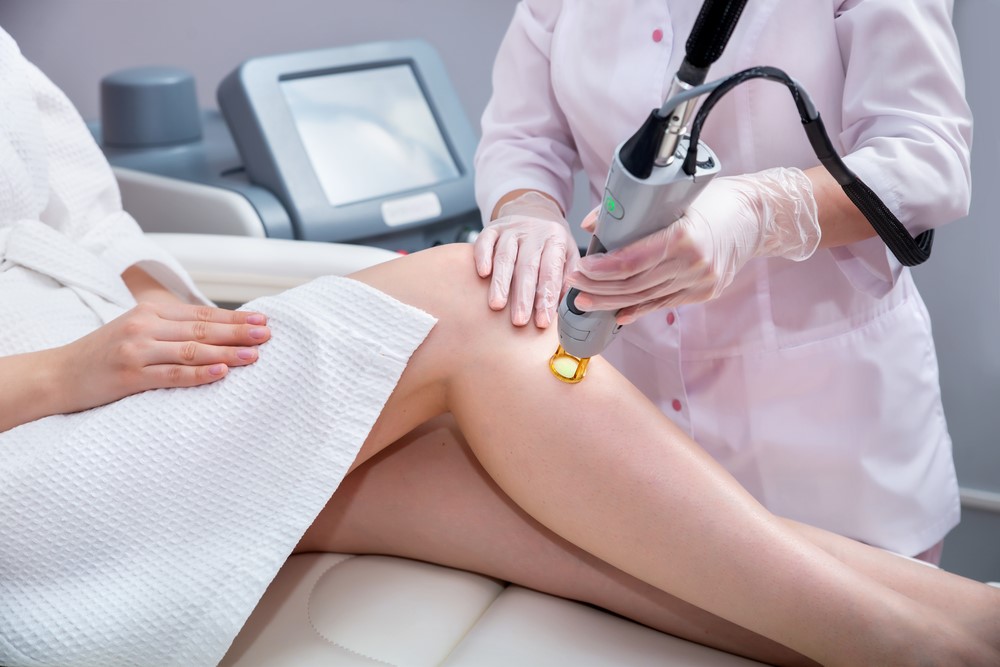
This post is also available in: Tiếng Việt (Vietnamese)

Authors:
Lasers have many effective applications in medicine. However, the use of laser treatment requires the appointment of a doctor approved by the University of Medicine and with extensive experience in the field of laser. Lasers are widely used in deep specialties and each of these diseases has specific indications and contraindications. This article discusses the general remarks regarding the use of lasers in treatment in each specialty, based on the decisions of the Ministry of Health concerning the promulgation of technical procedures for the medical examination and the treatment in specialties.
Dermatologists will not use a laser to treat infected or viral skin, the skin is frequently exposed to ultraviolet rays, which increases the photosensitivity, the treated skin has been irradiated, melanoma; the laser is not used in patients who have stopped using isotretinoin for less than 6 months, a history of keloid scars or hyperkeratosis, atopic keloids scars, mental disorders; do not use on pregnant women taking isotretinoin.
In ophthalmology, if the patient has lesions in the eyes, cornea, does not use lasers for surgery or has no health problem that does not allow the procedure.
The laser is not used to create a raft zone in the treatment of open angle glaucoma when patients with trauma glaucoma have anterior angle of the anterior chamber, which corneal scars do not clearly see anterior angle or that patients with generalized pathology do not allow progression to surgery.
Lasers are also not used to form an anterior chamber angle in the treatment of narrow-angle glaucoma when patients with corneal edema are not able to clearly see the iris, have a superficial chamber, have glaucoma secondary because of uveitis, glaucoma pulse, glaucoma due to trauma.
The laser is applied in surgery to open the posterior crystalline lens on opaque eyes after cataract levels 2 and 3 of visual acuity of 3/10 or opaque eyes after first degree, view> 3/10 but it there are dysfunctions that affect the patient’s life (glare). However, doctors will not apply the laser in this technique if the eye is accompanied by the pathology.
People also use the laser as a retinal coagulation to treat and prevent retinal detachment, retinal anemia, retinopathy of old age, after retinitis, retinopathy, but if the patient has systemic and ophthalmic diseases that do not do not allow surgery, the laser can not be used. In addition, laser excimer is not used for the surgical treatment of refractive errors if the general and ophthalmic conditions do not allow it. In premature infants, lasers will not be used in the surgical treatment of retinopathy if general and ophthalmic conditions are not allowed.
Application of laser acupuncture in traditional medicine to treat pain and paralysis but doctors will not use lasers in the following cases: unusual changes in skin without known cause; precancer, melanoma; patients after treatment with immunosuppressive drugs, high-dose steroids long-term; people with epilepsy; patients with decompensated heart failure, arrhythmia, coronary insufficiency; people with hyperthyroidism; do not project a laser on the fontanelle, the head of the long bones of a minor, next to the endocrine glands (thyroid, testicles …).
Lasers are used in the treatment of diabetic retinopathy and macular edema. But if the patient presents the following, this technique will not be used: perforated corneal scar with blood vessels in the cornea; cloudy fluid caused by inflammation and blood in the anterior chamber; pathological cataract yellow, black; vitré inflamed, bloody; blood glucose> 10 mmol / l; hepatic and renal insufficiency, serious medical problems.
In the field of odonto-stomatology, laser application is used to eliminate bacteria and promote root canal formation when the tooth does not show irreversible myelitis, gangrene or necrosis but the laser can not be used if the tooth has a pathological medullary disease, if the tooth has not been attached to the stem with a pathological morphology and if the tooth is indicated for extraction.
In addition, the laser is also used to prepare the sinus of welding, which is less painful, does not make noise, is fast and reduces the anxiety of the patients during the treatment of the decay of the dentine and the restoration of the neck, however, when dealing with the above problems, it is important to note that the laser is not used if the welding cavity is not able to store the welding material, allergy sealing, cavities in anterior teeth have aesthetic requirements, dentin lesions have lost a lot of hard tissue, which is difficult to keep in mass restoration, teeth with decayed caries have been damaged. Lasers are also used to remove pigments from the teeth and treat Epulis if the patient is not allergic, is over 18 years of age, is not pregnant or has an acute infection of the oral cavity.
Lasers are also used for endoscopic rhinoplasty if general medical conditions allow anesthesia or surgical anesthesia and are not in the acute sinusitis or laryngeal papillectomy stage through endoscopy.
The laser is the preferred method and has been widely applied in many countries around the world, thanks to the superior properties that are: “Laser treatment is painless, does not require surgery, takes no time to conquer”. However, for treatment to be effective and safe, we need to select reputable medical facilities, which must be consulted carefully before deciding on treatment.
References: